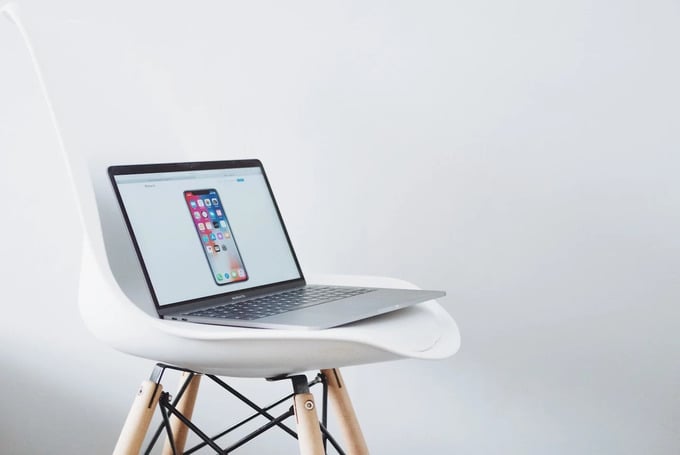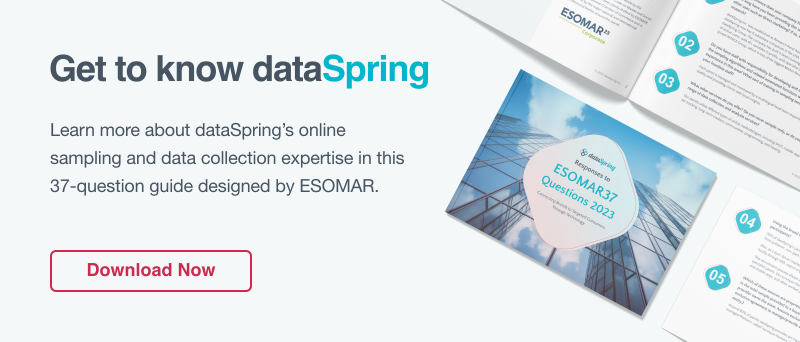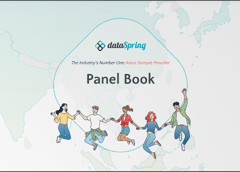![[Infographic] The 8-Step Guide to Product Testing Studies](https://www.d8aspring.com/hs-fs/hubfs/Blog/20180214-%5BInfographic%5D-The-8-Step-Guide-to-Product-Testing-Studies-Photo-1.jpg?width=680&name=20180214-%5BInfographic%5D-The-8-Step-Guide-to-Product-Testing-Studies-Photo-1.jpg)
Match your research plan and objectives to the traditional product development process to help increase product testing success.
By now most marketers are familiar with the '80% of new products fail' statistic. Of course, this is a broad generalization, but the fact is, due to a number of factors, most new products fail. Market research can help improve these success rates, but it is crucial that research is conducted at the right time, and that the methods employed fit the objectives.
Most companies employ a standard development process in their new product planning. While variations exist, most utilize an eight-step process. Researchers and consultants tasked with supporting this process need to be knowledgeable about the objectives of each step, and which research methods best suit each stage.
8 Steps of Product Testing Studies
![[Infographic] The 8-Step Guide to Product Testing Studies](https://www.d8aspring.com/hs-fs/hubfs/Blog/20180214-%5BInfographic%5D-The-8-Step-Guide-to-Product-Testing-Studies-Photo-2-adjust.png?width=675&height=1072&name=20180214-%5BInfographic%5D-The-8-Step-Guide-to-Product-Testing-Studies-Photo-2-adjust.png)
Step 1: Idea Generation
Objective: Develop a large pool of potentially viable product ideas.
Research supports this step by providing consumer insights and product needs in a particular category. Often this stage involves extensive secondary (existing) research to identify consumer trends. It is also valuable to review any existing primary research a company has conducted.
One rich source is customer satisfaction research, which can be used to identify frustrations and gaps in current product offerings. Tracking study data can also provide useful knowledge of the competitive brand landscape.
From a primary research standpoint, online communities offer a great forum to gather insights. This approach involves empaneling target consumers in order to conduct longer-term product testing studies. This would include methods like product usage diaries and mobile ethnographies. The research objective is to provide the internal idea generation team with insights on gaps in current product offerings or currently unfulfilled consumer needs.
Learn more about mobile research here
Communities are also sometimes used for direct idea generation as well, however, many marketing experts believe that consumers are not the best source for product ideas. Better to let consumers define their wants, needs, and desires and let the R&D and marketing teams come up with potential solutions.

Steps 2 and 3: Idea Screening/Concept Development and Testing
Objective: Determine the most viable ideas for further development.
Market research is critical at this stage as it focuses on new product development resources on the most promising ideas based on direct consumer feedback. Idea screening research approaches depend greatly on the form the new product ideas take; for ideas that are relatively easy to grasp with a sentence or two and visual, a MaxDiff (also known as 'best/worst') method is useful, as it can be used to screen many ideas quickly. And because it does not use scales, MaxDiff is extremely valuable in cross-cultural research, where scale use among respondents can differ greatly.
For more complex product ideas, traditional concept testing utilizing rating scales can be used. If considering an online method, it is important to understand thoroughly the capabilities of your survey platform provider to ensure they can program these more complex methods.

Step 4: Business Analysis
Objective: Develop a final concept and business viability.
At this stage, the product development team looks to determine the business impact potential of the new product by analyzing production costs and competitive environment, as well as branding, marketing, and pricing strategy.
Research at this stage focuses on testing more developed concept ideas, which often include packaging and price point. This is where online methods have become the norm given their ability to display images and video.
A richer visual display provides respondents a better sense of the product idea, and therefore a more true-to-life response in terms of purchase intent. The use of virtual store shelves that can test different packaging and price points in a competitive context is also used extensively. It provides a powerful data set to the business team who can then develop volumetric models to help more precisely assess the business value of a new product.

Step 5: Product Development
Objective: Configure and develop a product prototype.
The transformation of a concept into an actual product can take time, but it is essential that the market research team stay close to the project during development. This will help ensure that the product stays true to the consumer insights that formed the basis for the idea. Once an actual prototype is developed, market research is used to test product performance with actual consumers through usage tests.
Depending on the product, this can take the form of one time in-person tests (ready-to-eat food products, websites and mobile apps lend themselves to this type of testing) or longer-term in-home use tests (IHUT) for products that require multiple uses in order to be evaluated.
IHUTs have been revolutionized by mobile research as they allow users to easily capture their 'in the moment' reactions to using a product (or service). Combined with the image capture and recording capabilities of the smartphone, mobile methods provide the product development team with important details that can help perfect the final product configuration.
Step 6: Test Marketing
Objective: Introduce product into the market to validate the concept before launch.
Not all products receive the benefits of a test market, however for food and CPG products this stage is crucial. From a market research standpoint, supporting a test market can take many forms.
Often the launch of a new product is supported by marketing, so ad/marketing effectiveness research is conducted. This can be done before the launch on ad concepts (pretest) or as a monitoring device once the campaign is launched (tracking). It is important that the target consumer is clearly defined at this point, so a sample plan can be developed. And because this information is used to project national results, it is critical at a quality sample provider be used.
Test markets can also benefit from product satisfaction research. This feedback is important as it provides the product development team with insights that can help perfect details before the full product launch. There is a full range of methods that can be used here, from simple mail-in postcard surveys to using QR codes that allow users to provide immediate feedback on their mobile device.

Steps 7 and 8: Commercialization/Monitoring and Evaluation
Objective: Full product launch.
In support of a product launch, many of the methods used to support a test market are re-created – ad/marketing effectiveness testing, tracking, and customer satisfaction. Most often it is the tracking study that is the highest profile and can have the most business impact for a firm.
Tracking study success depends on three key factors: quality sample, questionnaire design, and reporting. A critical component for a tracking study is to get input and buy-in from key stakeholders early in the process so the study results meet executive expectations. And as noted earlier, the tracking results will also likely inform future new product development.

In Closing
Researchers and consultants tasked with supporting product development must be prepared to use just about every research tool available. In addition to conducting quality research, one of the most important roles research plays is to represent the consumer/user during the product development process. This role as consumer advocate becomes much easier when backed up with insights derived from quality market research.


 Download Panel Book
Download Panel Book


